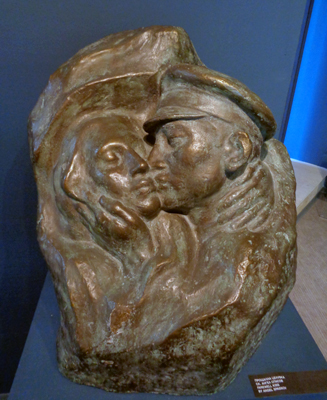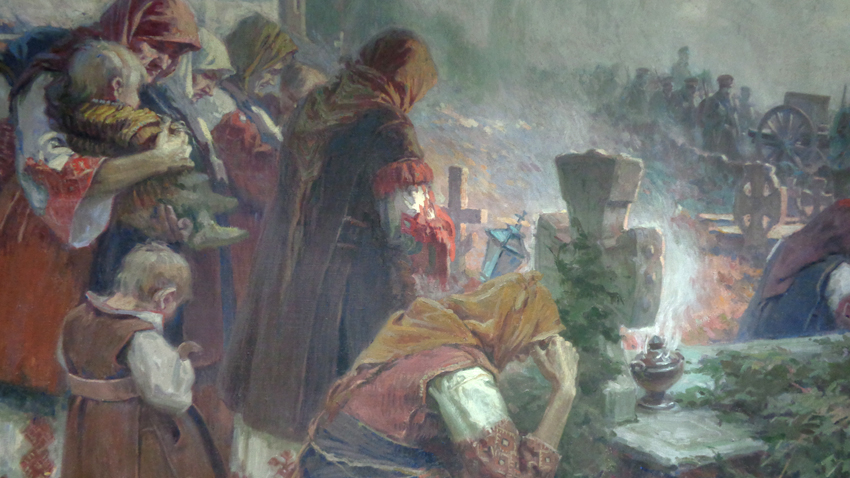“I had no weapons, I only had ransack and easel!”- is the name of the large-scale exhibition, which was opened at the National Museum of Military History, which displays works of Bulgarian artists and sculptors. The exhibition was launched on occasion of the 100th anniversary of WW1 and Bulgaria’s participation in this war in 1915. This country joined a global military conflict, because it was driven by the will to integrate territories populated mainly by Bulgarians. Many artists armed with paint-brush, paints and easels were also sent to the battlefield.
 “The artists were appointed to the headquarters of the Bulgarian army and the military units. Their task was to make a retrospection of the military actions of our army”, deputy curator of the museum Dr Daniela Tsankova told Radio Bulgaria. The idea of the army commanders was to show the victorious march of the Bulgarian army. However, the artists who witnessed the tragic events drew a realistic picture of the war: its horror, tragedies, exhausted faces of the Bulgarian soldiers, death, wounded people and refugees. Now, 100 years later we can feel and see all this. The military artists take us straight to the battlefield. They create works, which give a very clear picture of what happened back then. That is why we are proud to possess these works. We launch such a large-scale exhibition for the first time. It consists of over 400 works of art from 50 artists. An interactive method is also used at the exhibition, so people can see the works on a touch-screen as well. The restoration methods and some original frames from WW1 were also shown there. The texts in the exhibition are in fact memories of the military artists and evidence of their expectations and the real events during the military conflict. Ourvisitorscanseeallthisattheexhibition.”
“The artists were appointed to the headquarters of the Bulgarian army and the military units. Their task was to make a retrospection of the military actions of our army”, deputy curator of the museum Dr Daniela Tsankova told Radio Bulgaria. The idea of the army commanders was to show the victorious march of the Bulgarian army. However, the artists who witnessed the tragic events drew a realistic picture of the war: its horror, tragedies, exhausted faces of the Bulgarian soldiers, death, wounded people and refugees. Now, 100 years later we can feel and see all this. The military artists take us straight to the battlefield. They create works, which give a very clear picture of what happened back then. That is why we are proud to possess these works. We launch such a large-scale exhibition for the first time. It consists of over 400 works of art from 50 artists. An interactive method is also used at the exhibition, so people can see the works on a touch-screen as well. The restoration methods and some original frames from WW1 were also shown there. The texts in the exhibition are in fact memories of the military artists and evidence of their expectations and the real events during the military conflict. Ourvisitorscanseeallthisattheexhibition.”
The exhibition starts with the painting entitled Liberators, painted by Bulgarian artist Gyudjenov. Director of the Scientific Research and Exposition Activities Directorate Marieta Staneva has more about this painting:
“This is a very complex picture. It depicts human sorrow, misfortune and wretchedness. It shows us the terrible face of war, which leaves permanent and horrible damages in peoples’ souls long after the end of the battle. We see a memorial service, a tragic picture and Bulgarian troops on its background. Most of the paintings which are on display at the exhibition are full of humanity. The artists tried to show the price of the war paid with graves of unknown soldiers, tears of widows and orphan destiny, rather than the victorious onrush, the war strategy and tactics.”

Renowned Bulgarian painter Nikola Tanev for example described in his memoirs how Bulgarian soldiers slept in cold trenches covered with a thin ground sheet only, how their clothes and belongings were covered in mould and moisture, how their vehicles could not cross the snow-drifts for many days and when the soldiers left on their two-week holiday to see their families, half of their time off was spend walking to the nearest railway line.
Letters, invoices and reports of the artists to the Military Museum which was established back in 1916 are also on display at the exhibition. The museum provided paint, canvasses and paper to the Bulgarian artists who gave some of their works in return. However, the painters often had difficulties finding the necessary materials during the war. That is why Mr Gyudjenov took the curtain from his room and painted one of his pictures on it entitled The Battle Near Rosoviti Stone. Today this picture is a constant part of the museum’s exhibition.

Many Bulgarian painters depicted the war in their workssuch as Vladimir Dimitrov -The Master, Boris Denev, Konstantin Shtarkelov, Boris Mitov, Alexander Mutafov, Yakim Banchev, etc. The works of dozens of Bulgarian military artists was collected in a bilingual album entitled Bulgarian Military Artists during WW1 in two volumes made by Associate Professor Sonya Penkova. The first volume of the album was already released.
English version: Kostadin Atanasov
Photos: Veneta PavlovaPeople with mental disabilities will share their unique perspective on Sofia's architectural heritage in the photographic exhibition "Architectural Stories from Old Sofia". It will be opened on November 1 in the Cultural Space of the Central Sofia Market..
Although they came with the calling to uplift our world, the chosen ones not only followed their predetermined path, but also risked not fully revealing themselves because of their sacred duty to the Fatherland. Among these Renaissance Bulgarians was..
The Plovdiv Jazz Festival is celebrating its tenth birthday this year with a program, both in the summer and autumn, featuring some of the biggest names in the world of jazz. The autumn edition will announce the second largest city in Bulgaria - Plovdiv,..
World-famous opera singer Sonya Yoncheva has received the "Musician of the Year, 2023" award. It was presented to her by BNR Director General Milen..
Romanian President Klaus Iohannis awarded maestro Nayden Todorov the Order of Cultural Merit in the rank of Grand Officer, Category F - Promoting..
A photographic exhibition "Sylvie Vartan and her Bulgaria", dedicated to the French music icon of Bulgarian origin, will be open to the public from..

+359 2 9336 661
